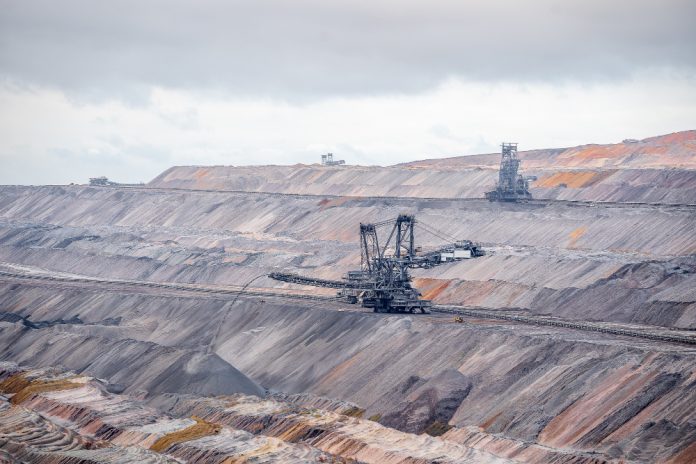India is blessed with a vast and varied mineral endowment—ranging from iron ore, bauxite, and coal to critical minerals like lithium, cobalt, and rare earth elements. Yet despite its geological wealth, much of India’s mining potential remains underutilized, trapped beneath layers of policy hurdles, exploration inefficiencies, and investment hesitancy.
The global energy transition, infrastructure boom, and supply chain realignment have created an urgent need to tap into these resources. Recognizing this, industry bodies like FIMI (Federation of Indian Mineral Industries) and the CII Mining & Metals Committee are actively working to position India as a magnet for mineral investment and innovation.
India’s Resource Landscape: Rich but Underexplored
India ranks among the top producers of key minerals globally, yet only a fraction of its estimated reserves has been scientifically explored and commercially mined. According to the Geological Survey of India (GSI), less than 15% of the country’s Obvious Geological Potential (OGP) area has been systematically explored.
This underutilization limits downstream industries, affects mineral security, and deters investors who seek predictable and policy-aligned opportunities.
Investment Challenges Holding the Sector Back
Several structural challenges have historically kept global and domestic investors on the sidelines:
- Complex regulatory frameworks involving multiple agencies and delayed clearances
- High royalty rates and levies, making Indian ore less competitive internationally
- Poor infrastructure and connectivity near mineral-rich zones
- Limited high-quality geological data accessible to private explorers
- Lack of investor-friendly dispute resolution mechanisms
For many investors, these risks outweigh the potential rewards—especially in a capital-intensive, long-gestation industry like mining.
Policy Reforms: Paving the Way for Growth
To unlock this potential, both central and state governments have introduced critical reforms in recent years:
- Introduction of National Mineral Exploration Policy (NMEP) to encourage private exploration
- Auction-based mineral block allocations to increase transparency
- Single-window clearance portals for faster permitting
- Reduction in import duties and export restrictions for certain ores
- Amendments to the MMDR Act to allow private participation in legacy mine auctions
These reforms have been largely shaped and supported by continuous engagement from FIMI and CII, who act as industry conduits to policymakers, ensuring reforms are aligned with ground realities.
FIMI and CII: Catalysts for Investment and Collaboration
FIMI actively works with both Indian and foreign investors, offering insights on:
- Legal frameworks for mining leases
- Risk analysis and royalty benchmarking
- ESG compliance in mineral projects
- International trade trends in commodities
On the other hand, CII organizes high-profile investment summits, facilitates partnerships through networking forums, and runs thought leadership campaigns to project India as an emerging mining hub. Through its Mining & Metals Committee, CII has even proposed the creation of “Mineral Investment Zones”—regions with pre-cleared mineral blocks, digital infrastructure, and logistical support tailored for investors.
Opportunities on the Horizon
The momentum is building. India is now actively seeking investment in:
- Critical minerals like lithium, cobalt, and graphite for electric mobility
- Mineral processing and beneficiation plants to reduce raw export and add value domestically
- Technology-driven exploration, including remote sensing and AI in geosciences
- Sustainable mining practices that align with global ESG standards
As the world shifts away from fossil fuels and toward mineral-based renewables, India’s role as a reliable, scalable mineral supplier is becoming more viable—and more valuable.
Conclusion
India’s mineral story is no longer just about what lies beneath the surface—it’s about what lies ahead in policy, infrastructure, and investment readiness. With sustained reform momentum, growing global demand, and industry leadership from FIMI and CII, the path to unlocking India’s mineral potential is clearer than ever.
Now is the time to mine not just resources—but trust, innovation, and global partnerships that will define India’s next mining decade.
FAQs
1. Why is India’s mineral potential still underutilized despite having large reserves?
Only a small percentage of India’s mineral-rich zones have been scientifically explored. Bureaucratic hurdles, outdated regulations, and a lack of private participation have slowed development.
2. What reforms have been introduced to attract investment in Indian mining?
Recent reforms include auction-based licensing, single-window clearances, amendments to the MMDR Act, and the promotion of private exploration under the NMEP.
3. Which minerals are key investment opportunities in India?
Critical minerals such as lithium, cobalt, and rare earths are in high demand due to the energy transition. India is also rich in iron ore, bauxite, and manganese.
4. How are FIMI and CII helping investors navigate the mining sector?
FIMI provides legal and strategic advice, while CII facilitates networking, organizes investor summits, and advocates for policy alignment through its committees.
5. What is India doing to promote sustainable and responsible mining?
India is integrating ESG norms, supporting green mining zones, and investing in technologies like AI, digital monitoring, and environmental remediation tools to align with global best practices.












